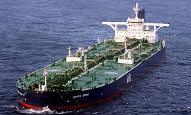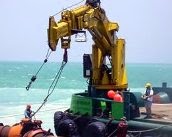Emerson Process Management has introduced new Daniel multi-path gas and liquid ultrasonic meters that feature a next-generation electronics platform.
The accuracy, line size breadth, and flexibility make the new JuniorSonic one-path (3411) or two-path (3412), and SeniorSonic four-path (3414) gas ultrasonic meters ideal for a number of flow measurement applications. In addition, the new four-path (3814) liquid ultrasonic meter expands on the functionality and performance of its predecessor, the 3804 liquid ultrasonic meter, to offer improved reliability for custody transfer applications.
With faster flow sampling rates, the new electronics platform significantly increases the data set used to calculate average velocity, allowing rapid recognition of changing flow dynamics. Users will have access to high-volume data capture as well as detailed flow parameters, including pressure, temperature, and gas composition, allowing the meter to act as a redundant flow computer.
Improved calculations for auditing or invoice resolution are enabled by the electronics’ fast delivery of key data from the meter’s audit trail. The audit trail complies with American Petroleum Institute Standard 21.1, and is supported by a standard 128 MB non-volatile memory. Access to alarms, events and configuration changes is provided in a matter of seconds.
Additionally, the meters’ electronics feature a compact circuit board for increased reliability and maintainability, simplifying field removal and reinstallation. The electronics retrofit Daniel legacy ultrasonic meters and are expandable, enabling future upgrades to help meet changing customer needs. The electronics support remote access as well as true 100BaseT Fast Ethernet connectivity to facilitate enterprise-wide communication and integration.
To further improve reliability and uptime, each Daniel gas ultrasonic meter is supplied with new, rugged T-20 Series transducers that are engineered for wet, rich and/or dirty gas applications. The transducers facilitate troubleshooting by enabling operators to quickly detect and isolate problems, preventing unnecessary depressurization of the meter.
The new Daniel gas and liquid ultrasonic meters are also equipped with an updated version of MeterLink (v1.10), a configuration and diagnostic software that utilizes an intuitive interface to improve overall functionality and ease of use. MeterLink displays abnormal flow profiles, upstream blockage, deposit build-up within the meter, and the existence of liquid hydrocarbon in gas.
Providing useful resources, articles and writings on crude oil, other petroleum products, energy and gas. By Blockline and Associate Ltd Nigeria Ltd, online.

 Nigeria Bonny Light Crude Oil (BLCO, FLCO and ALCO, etc): We sell mostly on FOB, CIF, TTO and TTT/STS Basis.
Nigeria Bonny Light Crude Oil (BLCO, FLCO and ALCO, etc): We sell mostly on FOB, CIF, TTO and TTT/STS Basis. We sell and lease tug-boats of all kinds.
We sell and lease tug-boats of all kinds.
